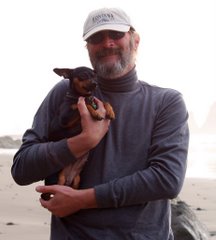I’ve been doing a lot of driving lately. Drove to Butte and Bozeman then back home a
couple of weeks ago. Last week, I drove
to Republic, Washington and back, then yesterday to Colfax, Washington and
back. And this morning I meditated over
my morning coffee on the deck that it is surely true that it’s the journey that
counts, not the destination. My dad was
a destination driver. Every year we’d
load up the car and drive to the cabin in the Bitterroot mountains west of
Stevensville. Roughly 900 miles one way,
and we’d stop only for gas, quick meals (get your potty breaks at one or the
other), and maybe 3 to 5 hours in a motel in Winnemucca. Once I started driving, the motel stops were
a thing of the past. He’d often comment
(like every time we drove Highway 12 up the Idaho side of Lolo Pass), “One of
these days, I’m going to fish that stream” referring to the Lochsa River. He died without ever stopping to fish the
Lochsa.
Along U.S. Highway 12
Taken 4/21/16
I used to be a destination driver,too. Guess that’s one thing I got from my
dad. But yesterday’s journey through the
Palouse opened my eyes. You see, if you’re
a destination driver, the roads through the Palouse seem endless and
boring. Up one hill, down the next,
through a valley that seems more like a canyon, then rinse and repeat. Over and over, world without end, until you
finally arrive at your destination. I’ve
done that a lot in the past, driving to Moscow or Pullman for meetings or to
visit friends. Driving to Walla Walla
and beyond on my way to or from a visit to Mother. And heaven help you if you’re driving from
Pullman to Connell, a distance of 98 miles along Washington Route 26 that
Mapquest says will take you 1 hour and 43 minutes, but will feel like it’s
taking f*o*r*e*v*e*r because there’s no change in the scenery as you cross the
Palouse. OK, let’s be honest. There’s no change if all you’re looking at is
the road. The hills, valleys, fields and
farms tend to look alike when you’re seeing them out the corner of your eye.
(The attendant at the convenience store next door suggested that the "130 year old men" said it was a transfer station, from the time the railroad passed through the valley. Works for me.)
Rockford, Washington
7/23/16
Yesterday’s drive was different. I was out specifically to see what I could
find of interest in Whitman County, Washington.
Along the way I found a strange building made of brick on the south side
of Rockford, Washington, a round barn with a very ornate roof on the west side
of St. John. I drove across an almost
dry, stone sided canyon west of Pine City called, appropriately enough “Hole in
the Ground.” I found an abandoned church
in the ghost town of Elberton, northeast of Colfax. I saw Steptoe Butte from the north, the east,
and the west, and found a chandelier hanging from the branches of a tree in
front of the Latah Schoolhouse, now available for weddings and receptions, don’t
ya know, in Latah, the Centennial City, Washington.
Between St. John and Cheney, Washington
(The mystery here is the number of pickups with boat trailers parked alongside the dirt road. I didn't see any water deep enough or wide enough to accommodate the boats.)
7/23/16
I got a lot of good photographs too, (and more than a few
duds). But most of all, I got an
appreciation for the beauty of the land, the infinitely varied landscape of
farm, field, mountain, valley—even if I still think the valleys are more like
canyons.
Colfax, Washington
7/23/16
Oakesdale, Washington
7/23/16











